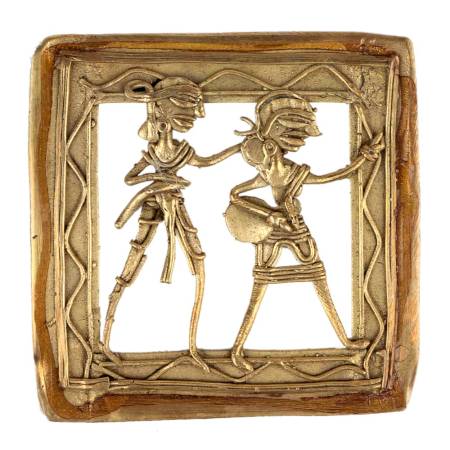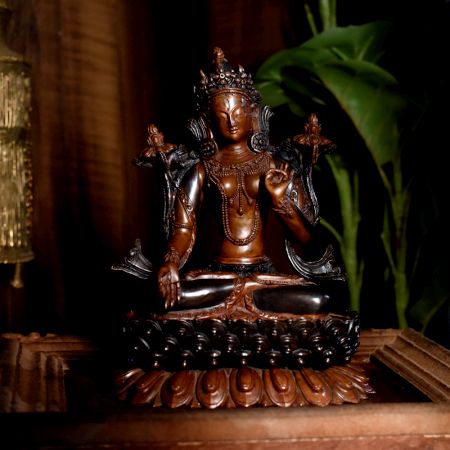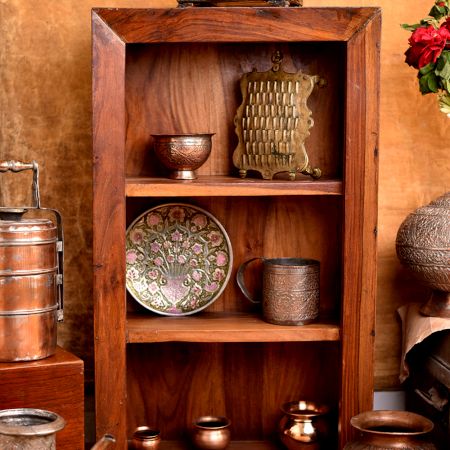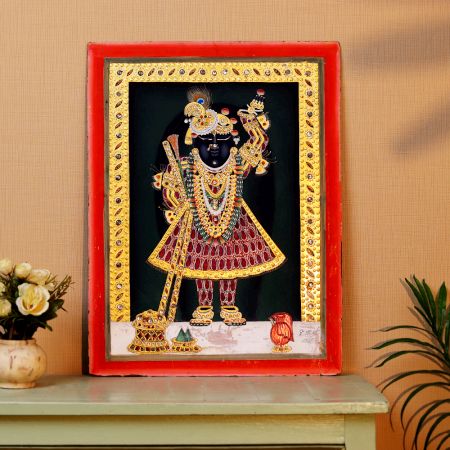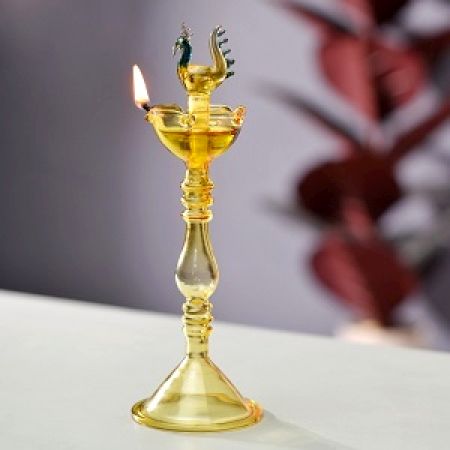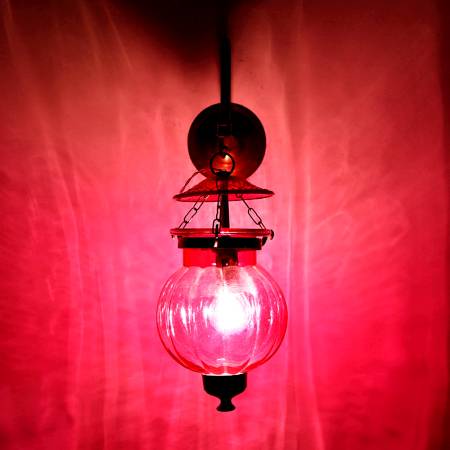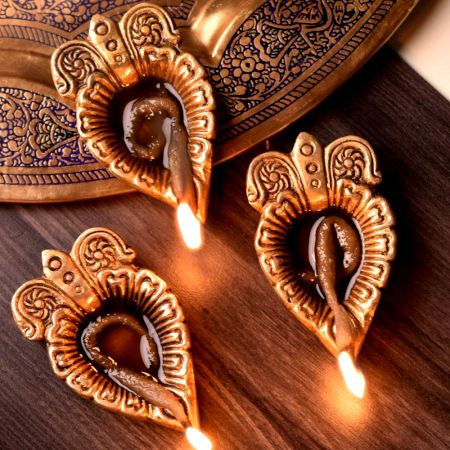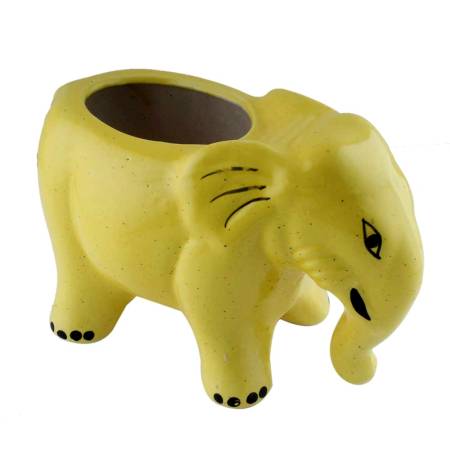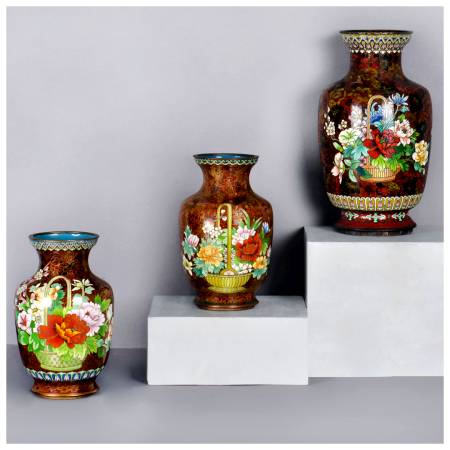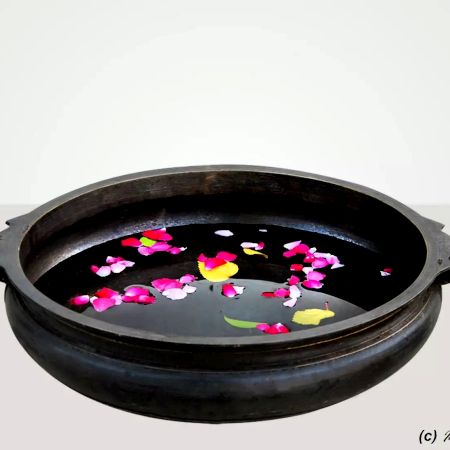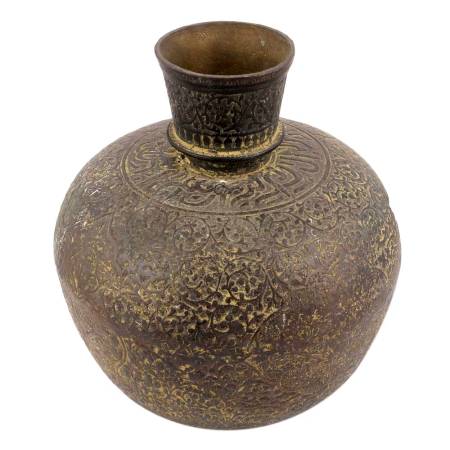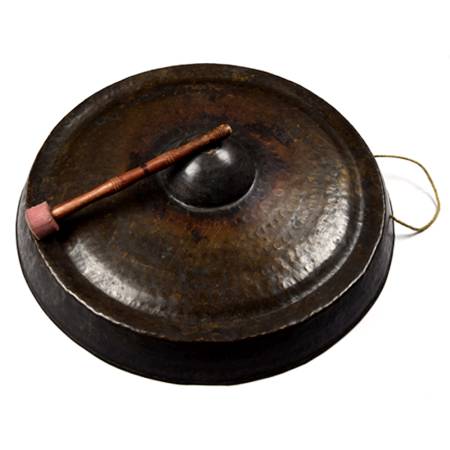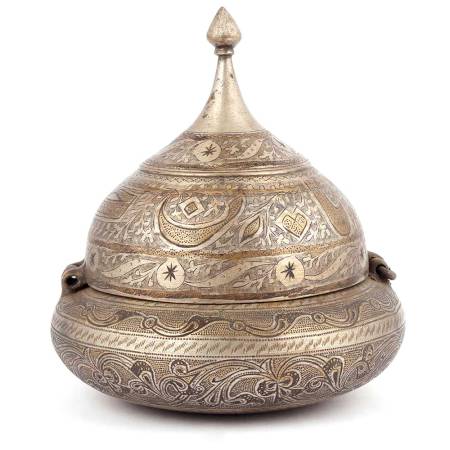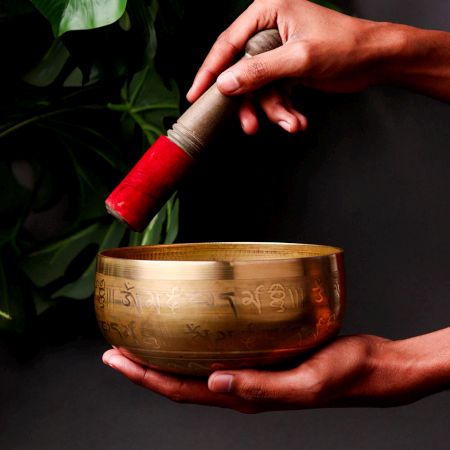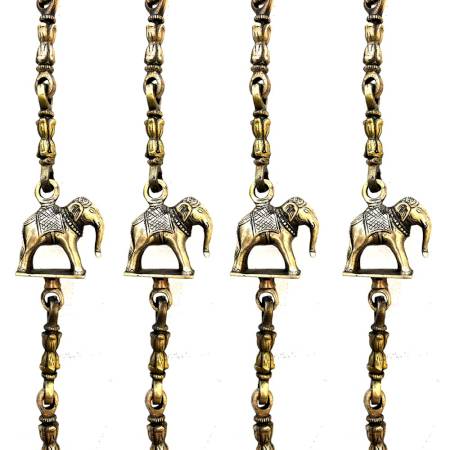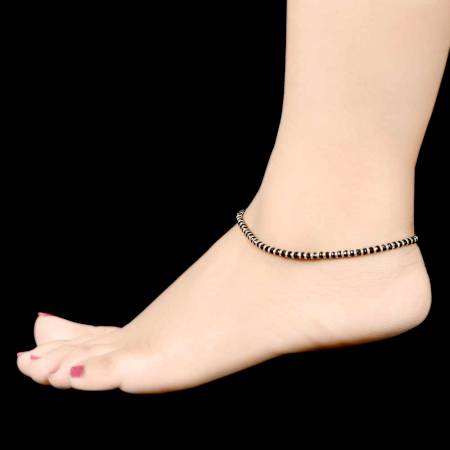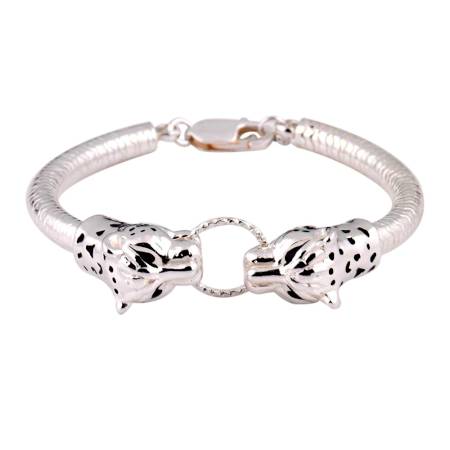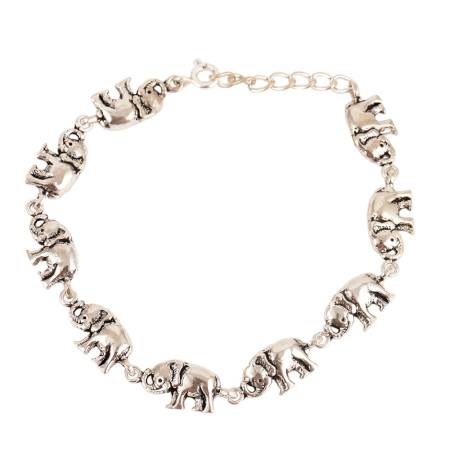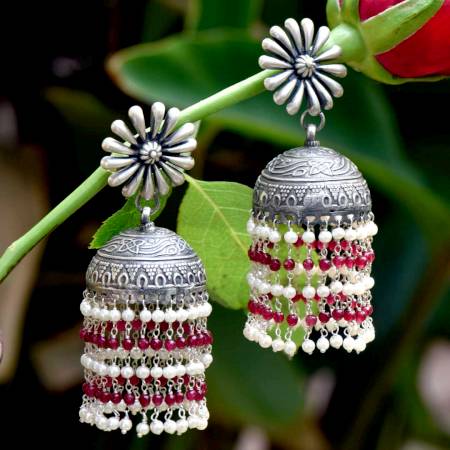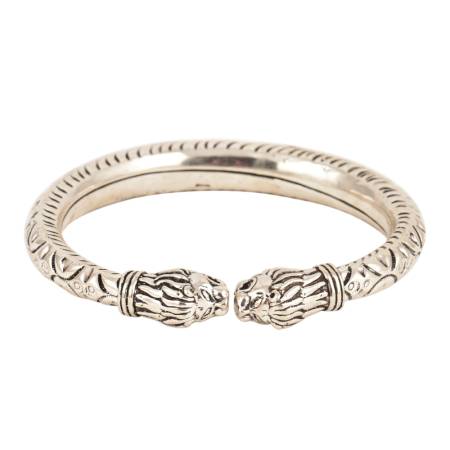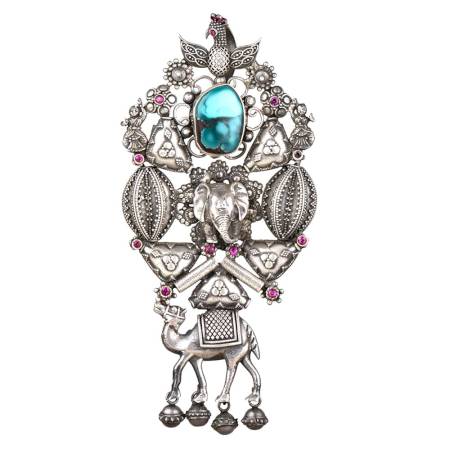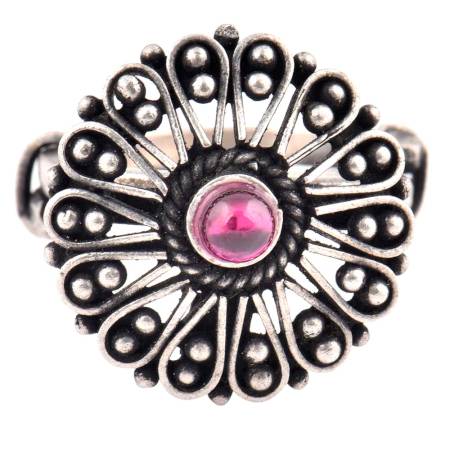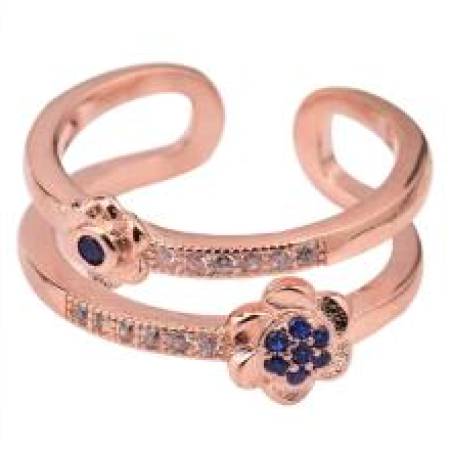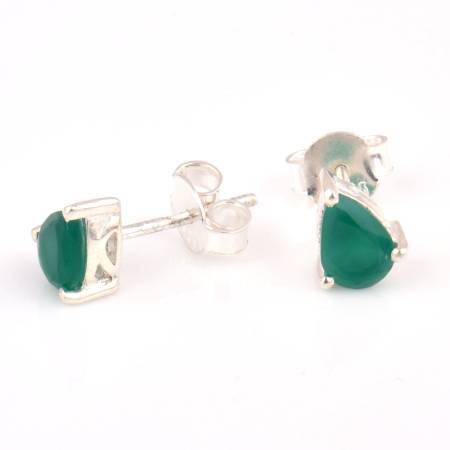-
Pair of Cloisonne Vases Blue Floral Ground With Polychrome Flower Baskets(Set of 2)
- ₹ 100,000.00
-
Only 1 left
Cloisonne: History, Techniques & Cultural Relevance
Cloisonne is more than ornament. It is a craft where metal and fire meet color and narrative. The art developed centuries ago, weaving together copper, bronze, enamel, and delicate wirework. Each object, whether vase, bowl, or pendant, becomes a miniature cosmos, carrying symbolic worlds in vibrant cells. Its appeal lies in both mastery of technique and resonance of meaning. Seen in temples, palaces, and homes, cloisonne echoes continuity, heritage shaping modern aesthetics. Today, it is admired as collectible art, cultural memory, and design language, bridging dynastic pasts with contemporary decorative imagination.
What Is Cloisonne And How Did It Originate?
Cloisonne originated as a decorative technique in the ancient Near East and reached its highest refinement in China, particularly during the Ming dynasty. At its core, the art involved shaping thin metal wires into patterns (cloisons), filling the spaces with powdered enamel, then firing to fuse glass and metal into lasting brilliance. Its journey reflects cultural exchange, Byzantine, Islamic, and Chinese artisans shaped and reshaped its vocabulary. In China, cloisonne became an imperial art, adorning ritual vessels, censers, and altars with dragons, lotuses, and clouds. The intent was not simply beauty but spiritual balance, where metal signified permanence and enamel embodied cosmic harmony. Collectors today seek cloisonne because it tells a story of trade routes, courtly patronage, and cultural synthesis. Its appeal lies not only in its radiant colors but in its history of adaptation, showing how artistry traveled, transformed, and found identity across civilizations.
What Themes And Motifs Define Cloisonne Designs?
Cloisonne motifs speak a visual language. Dragons coil as symbols of imperial authority, phoenixes rise for renewal, and lotus blossoms bloom for purity. Clouds, waves, and geometric scrolls bind earthly and celestial realms together. Across dynasties, the repertoire shifted, Tang artisans favored Buddhist lotus and mandalas, while Ming workshops leaned toward bold dragons and peonies. Folk adaptations introduced fish, cranes, and seasonal flowers, linking the art to everyday prosperity and longevity. These themes carried more than decoration, they conveyed encoded blessings. A bowl adorned with bats suggested happiness, a vase with peaches implied immortality. The symbolic power gave cloisonne presence in both palaces and households. Today, motifs resonate as cultural metaphors, grounding the art in shared imagination. Whether displayed in museums or homes, cloisonne motifs act as storytellers, offering visual prayers, wishes, and aspirations. They remain timeless because their meanings cross eras and speak to universal desires for harmony.
What Are The Most Recognized Styles In Cloisonne?
Cloisonne styles mirror cultural moments. The Yuan dynasty introduced bold outlines with darker enamel tones, giving objects a weighty presence. Ming artisans refined the balance, favoring turquoise grounds with luminous floral scrolls and dragons. Qing cloisonne, especially under Emperor Qianlong, displayed technical perfection, multi-colored enamels, miniature precision, and symbolic layering of Buddhist and Daoist themes. Beyond China, Japanese cloisonne (shippo) evolved into highly polished surfaces, near painting-like gradients, and modern abstraction. French artisans, inspired during the Renaissance, emphasized intricate jewelry and ecclesiastical objects. Each style reflects geography, patronage, and aesthetic taste. A Ming vase differs in intent from a Japanese enamel plate, one speaks of ritual grandeur, the other of subtle design experimentation. Recognized styles help collectors and historians trace epochs. More than categories, they are echoes of dynastic aesthetics, markers of cultural rhythm. To study cloisonne styles is to see how art adapts while carrying memory.
Why Does Cloisonne Remain Celebrated In Modern Decorative Arts?
Cloisonne endures because it combines timeless beauty with storytelling. In modern homes, a cloisonne vase or jewelry piece carries echoes of dynasties, yet its glossy enamel and intricate patterns feel contemporary. Designers admire it as a model of balance, metal providing strength, enamel offering color, motifs carrying meaning. Cultural institutions value it as a living link to global trade and artistic diplomacy. Its survival lies in adaptability, artisans today still create cloisonne, blending traditional motifs with new palettes and forms. For collectors, it offers both aesthetic pleasure and investment value. For everyday admirers, it brings color and history into living spaces. Cloisonne remains celebrated because it symbolizes permanence through artistry. Fire hardens it, meaning deepens it, and beauty sustains it. In modern decorative arts, it proves that heritage and innovation are not opposites but companions. Its glow is as relevant in today’s interiors as it was in imperial courts.
Techniques, Materials & Craftsmanship in Cloisonne
The craft of cloisonne rests on precision. Copper or bronze vessels serve as foundation. Thin wires, shaped into motifs, define structure. Enamel paste, carefully applied, fills each partition. Firing transforms powdered glass into gleaming enamel, while polishing brings radiance. The process demands both patience and vision, each firing risks cracks, yet each success carries permanence. Craftsmanship evolved across dynasties, with artisans mastering wire thickness, enamel layering, and firing temperature. Materials, copper for malleability, bronze for durability, enamels for vibrancy, work together to build both art and function. Cloisonne thus becomes not just design but dialogue between element and hand.
How Was Cloisonne Traditionally Created Across Dynasties?
Cloisonne creation began with forming the vessel, usually in copper for its easy shaping. Artisans bent thin wires into patterns, soldered them onto the base, and filled the spaces with enamel paste made from crushed minerals. Each layer required firing in kilns, sometimes multiple rounds, until surfaces gleamed with color. During the Ming dynasty, artisans emphasized turquoise grounds with bold dragons, while Qing masters achieved higher refinement with multiple color layers and precise motifs. The tradition was not static, techniques shifted with patronage, dynastic preference, and technological advancement. For example, under Emperor Xuande, cloisonne gained status as an imperial craft, while under Qianlong, enamel hues reached unparalleled brilliance. Across dynasties, the making of cloisonne reflected not just technique but philosophy, discipline of hand, patience of process, and harmony of elements. Each finished object embodied not just decoration but a world ordered by craft, ritual, and meaning.
What Materials Are Used In Cloisonne (Copper, Bronze, Enamel)?
Cloisonne thrives on three primary materials, copper, bronze, and enamel. Copper, soft and malleable, became the favored base for shaping vessels with intricate forms. Bronze, harder and weightier, was used for ritual objects, lending gravitas and permanence. Enamel provided color, a mixture of powdered glass fused with minerals to create vibrant shades, turquoise, cobalt blue, emerald green, ruby red. Gold or gilding sometimes adorned wires and surfaces, elevating value and visual impact. Each material carried symbolic resonance, copper symbolized adaptability, bronze continuity, enamel the brilliance of transformation under fire. Together, they formed a triad of stability, durability, and beauty. The interplay of metal and glass defined cloisonne unique appeal, hard structure softened by luminous sheen. These materials were not arbitrary, they reflected cultural priorities, where art was both functional and spiritual. Even in modern adaptations, the same core materials remain central, proving the durability of ancient material choices in artistic expression.
How Do Metal Wires, Enamel Paste, And Firing Shape Cloisonne Art?
The process of cloisonne depends on three essentials, wires, enamel, and fire. Wires act as skeletons, creating boundaries for patterns, dragons, florals, clouds, each formed by bending thin strips. Enamel paste, carefully applied, fills these partitions, giving the surface color and depth. Firing in kilns transforms the powder into glossy enamel, bonding glass to metal. Repeated firings, often multiple times, deepen colors and strengthen surfaces. Polishing then reveals the brilliance hidden under layers of ash. The dialogue between line, color, and flame shapes cloisonne signature look, structured yet fluid, radiant yet durable. Without wires, patterns dissolve, without enamel, colors fade, without fire, forms remain inert. Together, they animate metal into luminous storytelling. This triadic process became a metaphor in itself, order, life, and transformation through craft. Each piece of cloisonne stands as testimony to controlled risk, beauty born from fragile materials and the discipline of repeated refinement.
Artistic Intent and Symbolism of Cloisonne
Cloisonne is more than craft, it is coded meaning. Motifs of dragons, lotuses, cranes, or waves were never random, they carried cultural prayers and dynastic power. A censer might embody cosmic balance, a vase might channel blessings of long life, while jewelry expressed status or personal aspiration. Religious influences, Buddhist lotus, Daoist symbols, Confucian harmony, intertwined with imperial and folk imagery. Colors themselves acted as signs, turquoise for heaven, red for vitality, gold for divinity. Cloisonne thus became portable philosophy, art as symbolic language. Each piece invited the viewer to not just admire but interpret, carrying culture into daily life.
What Narratives Or Cultural Messages Does Cloisonne Convey?
Cloisonne objects tell layered stories. At court, vessels conveyed imperial authority, with dragons signifying sovereignty and order. In temples, cloisonne censers and ritual implements carried Buddhist cosmology, lotus blossoms reflecting purity and enlightenment. In homes, smaller objects bore folk symbols, fish for abundance, cranes for longevity, peaches for immortality. Beyond direct motifs, cloisonne conveyed messages of permanence, fire fused glass on metal signified resilience, an enduring beauty beyond decay. The narratives embedded in cloisonne are cultural bridges, blending state ideology, religious faith, and everyday wishes. Its symbolic role gave it life beyond decoration, it became emblem, offering encoded communication. Even today, collectors and admirers read cloisonne pieces not only as visual delights but as cultural texts. They remind us that art was never mere ornament but a living medium of values, stories, and aspirations, accessible both to rulers and common people, across dynasties and geographies.
How Do Religious, Imperial, Or Folk Motifs Appear In Cloisonne?
Cloisonne bridges spheres of life, imperial, sacred, and domestic. Imperial workshops filled palaces with dragon clad vessels, symbols of power and centralized order. Religious influence entered through Buddhist lotus, Daoist eight treasures, and Confucian harmony patterns, giving cloisonne sacred resonance. Folk artisans brought everyday aspirations, bats for happiness, gourds for fertility, or seasonal flowers for prosperity. Each domain left its mark, blending hierarchies into shared visual culture. In a Qing palace vase, imperial dragons might swirl alongside Buddhist clouds, embodying layered identities. This cross pollination made cloisonne more than a single class art, it became an art of integration. From temple rituals to household heirlooms, motifs adapted, carrying meanings that remained accessible yet profound. In every motif, cloisonne universality emerged, art as both elite luxury and common blessing. This capacity to merge imperial grandeur with folk symbolism ensured cloisonne cultural longevity and broad appeal across dynasties and social spaces.
How Do Color Palettes And Enamel Finishes Affect Cloisonne Expression?
Color and finish give cloisonne its voice. Turquoise grounds evoke heaven’s expanse, cobalt blues channel depth and authority, ruby reds express vitality, and greens suggest renewal. Gold highlights add sacred luminosity, while black grounds enhance contrast and gravity. Enamel finishes, from glossy polish to subtle matte, shape emotional tone. A gleaming vase radiates opulence, while a softer finish suggests intimacy. The play of color was deliberate, red paired with gold amplified auspiciousness, blue against white evoked clarity and calm. Palette choices shifted with dynasties, Ming favored bold contrasts, Qing pursued layered subtleties. Beyond aesthetics, colors carried encoded meanings rooted in Chinese cosmology and five element theory. Enamel finishes extended this symbolic palette, turning surfaces into both visual and tactile experiences. The outcome was art that did not merely depict but embodied, objects that spoke through hue and sheen, carrying layered expressions of cultural and spiritual ideals across time.
Collecting, Investment & Market Value of Cloisonne
Cloisonne is more than decorative art; it is a bridge between craftsmanship, heritage, and value. Collectors view it as both an artistic treasure and a tangible asset. Its allure lies in rarity, motifs, and the handwork that defines each piece. From Ming dynasty vases to modern enamel panels, Cloisonne circulates through auctions, galleries, and private sales. Its market value rises when artistry meets provenance. Collectors search for distinct enamel finishes, intact wirework, and pieces tied to cultural epochs. As markets shift, Cloisonne remains a stable niche where history and investment converge with enduring beauty.
Where Can Collectors Find Authentic Cloisonne Objects?
Collectors often turn to curated spaces: international auction houses, museum deaccession sales, and specialized antique fairs. Chinese, Japanese, and French Cloisonne pieces appear regularly in Sotheby’s, Christie’s, or Bonhams catalogues, often accompanied by detailed provenance. Regional antique markets in Beijing, Kyoto, and Paris still reveal hidden finds. For modern buyers, certified online platforms provide access, though expertise is essential to avoid replicas. Museums and heritage galleries also occasionally release duplicates from collections. Authentic Cloisonne is most reliably found where connoisseurs gather, where expertise filters objects from imitations, and history remains attached to enamel, wire, and form.
How Can Buyers Verify The Authenticity Of Cloisonne Art?
Authenticity begins with close observation. Genuine Cloisonne carries weight, both physical and symbolic. Buyers should examine wire outlines: authentic works show fluid precision, not mechanical stiffness. Enamel should reveal depth, layers, and occasional irregularities from hand-firing. Base metals such as copper or bronze often show subtle patina over time. Provenance papers, workshop stamps, or dynastic marks strengthen authenticity claims. Consulting certified appraisers or museum experts further safeguards investment. Unlike modern reproductions, true Cloisonne resonates with history, its craftsmanship feels alive in the surface texture, brush-fired tones, and symbolic motifs. For buyers, patience and research remain the strongest protections.
What Makes Cloisonne A Valuable Asset For Collectors And Investors?
Cloisonne carries dual value: aesthetic significance and economic resilience. Collectors prize it for intricate enamel artistry, cultural symbolism, and dynastic ties. Investors view it as a tangible heritage asset that often appreciates with rarity. Pieces linked to Ming or Qing dynasties, or Japanese Meiji-era workshops, fetch remarkable sums. The value also lies in intact condition, unique motifs like dragons, lotus, or phoenix, and mastery of firing. Unlike transient décor, Cloisonne embodies permanence, craft, metal, and enamel preserved across centuries. For investors, it becomes both a cultural archive and a financial anchor, balancing history with enduring market appeal.
Care, Display & Preservation of Cloisonne
Cloisonne demands reverence not just as art, but as living heritage. Its enamel surfaces, though durable, are vulnerable to scratches, moisture, and sudden temperature shifts. Proper care ensures continuity between past and future ownership. Displaying Cloisonne in controlled environments protects while elevating its beauty. Preservation isn’t passive, it requires active engagement, gentle cleaning, and knowledge of restoration boundaries. Whether displayed in homes, galleries, or museums, Cloisonne’s survival depends on respect for material fragility. Caring for it ensures the enamel colors remain vibrant, the wire patterns remain intact, and the object continues to embody memory and meaning.
How Should Cloisonne Be Stored And Protected From Damage?
Storage begins with environment. Cloisonne thrives in stable temperature and humidity, away from direct sunlight, which can fade enamel hues. Soft, padded surfaces prevent scratching, while controlled cases reduce dust and accidental knocks. Wrap smaller pieces in acid-free cloth or paper, avoiding plastics that trap moisture. For long-term storage, museum-style cabinets with silica gel packets regulate air quality. Never stack pieces, as enamel chips under pressure. Protection lies in balance, shielding Cloisonne without isolating it entirely. When stored with care, the enamel retains its luster, and the cultural narrative embedded within remains untarnished by time or neglect.
What Display Methods Enhance The Beauty Of Cloisonne?
Cloisonne flourishes under thoughtful display. Spot lighting with warm tones highlights enamel depth, while neutral backdrops ensure motifs command attention. Glass cabinets protect yet allow visibility, creating museum-like elegance within homes. For larger vases, pedestals or console tables frame them as statement pieces, merging art with furniture. Grouping by theme, dragons, florals, or imperial symbols, adds narrative flow. Minimalist interiors let Cloisonne shine, while traditional décor integrates it harmoniously. Elevation, spacing, and lighting transform Cloisonne from static object to luminous centerpiece. Display becomes more than presentation, it becomes storytelling, where enamel, wire, and form reclaim their rightful prominence.
Can Damaged Cloisonne Be Restored Without Losing Original Craftsmanship?
Restoration is delicate, balancing preservation with authenticity. Minor chips or hairline cracks can be repaired by skilled artisans using enamel infills matched to original colors. However, over-restoration risks diminishing value. Authentic Cloisonne retains signs of age, patina, slight unevenness, or kiln marks, signifying its journey. Museums often prefer conservative restoration, stabilizing rather than perfecting. For collectors, transparency in restoration records is essential, ensuring integrity for resale or scholarly study. Done carefully, restoration extends life without erasing history. Cloisonne survives best when its scars are respected as part of its narrative, not as flaws to be erased entirely.
What Are The Most Common Preservation Challenges In Cloisonne?
The greatest threats to Cloisonne are environmental and human. Temperature fluctuations cause enamel expansion and contraction, leading to cracks. High humidity fosters corrosion in copper or bronze bases. Improper cleaning with abrasives dulls enamel shine. Handling without gloves transfers oils that degrade surfaces. Transporting without padding risks chipping. Dust accumulation in wire ridges is another silent enemy, diminishing detail over time. Collectors often underestimate these vulnerabilities. Museums counter them with climate-controlled rooms, specialized cases, and trained staff. For private owners, awareness is key, recognizing Cloisonne as fragile legacy, where every small act of preservation safeguards centuries of artistry.
Cloisonne in Home Decor & Interior Styling
Cloisonne is not confined to museums; it adapts gracefully into interiors, transforming spaces with color, light, and symbolism. Its enamel surfaces catch reflections, shifting moods across the day. Whether as vases, lamps, or decorative panels, Cloisonne adds cultural resonance to modern rooms. Its versatility allows pairing with both minimalism and tradition. Beyond beauty, it becomes conversation, a piece of heritage anchoring contemporary living. Homes styled with Cloisonne carry whispers of history, artistry, and human handwork. It turns interiors into narratives, where décor is not surface-level, but layered with meaning, memory, and subtle luxury.
How Can Cloisonne Objects Transform Interior Ambience?
Cloisonne changes atmosphere by introducing texture, brilliance, and symbolism. A single vase with lotus motifs infuses serenity, echoing spiritual calm. Dragon or phoenix designs bring energy and strength, aligning with cultural beliefs in power and renewal. Lamps or bowls reflect light, spreading enamel hues across walls. Unlike generic décor, Cloisonne carries cultural gravitas, it feels intentional, not ornamental. Placed thoughtfully, it shifts rooms from plain to poetic. In living spaces, it becomes a focal point; in private corners, it whispers intimacy. Cloisonne’s ambience is transformation through heritage, turning interiors into stories carved in enamel and fire.
What Interior Design Styles Best Match Cloisonne?
Cloisonne blends with diverse design vocabularies. In minimalist homes, its vibrant colors contrast neutral palettes, becoming living art. In traditional interiors, it aligns with carved wood, textiles, and heritage furniture, extending continuity of craft. Modern eclectic styles embrace Cloisonne as accent pieces layered with global artifacts. Even contemporary industrial spaces benefit, polished enamel softens stark lines of concrete and steel. Its adaptability comes from balance, Cloisonne can either dominate as centerpiece or harmonize as subtle detail. Design styles matter less than intention, spaces that value meaning, craftsmanship, and memory always find resonance with Cloisonne objects.
How Do You Choose The Right Cloisonne Piece For Different Spaces?
Choosing Cloisonne depends on function and scale. Large vases suit entryways, commanding attention as guardians of the home. Smaller bowls or boxes complement side tables, offering intimate beauty. Panels or plaques enrich walls without crowding. For bedrooms, softer motifs, floral or abstract, encourage calm. Public spaces like living rooms can host bolder designs, dragons, mythical birds, or imperial emblems. Color selection is key, blues and greens soothe, reds and golds energize. Matching with natural light enhances effect, as enamel reacts dynamically. The right piece is never random, it emerges from dialogue between object, space, and the atmosphere one wishes to create.
Cultural Significance & Historical Legacy of Cloisonne
Cloisonne has never been just ornamentation. It carried faith, prestige, and cultural diplomacy across centuries. In Chinese courts, it signaled imperial taste, blending metal with fire into luminous perfection. In Byzantine churches, it radiated divine brilliance, framing icons with sacred glow. More than craft, it was symbolism in enamel, a story in every wire. The legacy continues today, bridging east and west, antique and contemporary. Collectors read history in each curve of a dragon motif, each lotus pattern. Cloisonne remains a vessel of culture, memory, and meaning.
What Role Did Cloisonne Play In Chinese And Byzantine Art?
In Chinese art, Cloisonne embodied imperial refinement. Its colors reflected Confucian harmony and Buddhist symbolism. Dragons and lotuses adorned vessels used in temples, palaces, and rituals. In Byzantine art, Cloisonne was sacred craft. Gold and enamel icons, reliquaries, and crosses carried spiritual authority. Both traditions valued luminosity and permanence, seeing enamel as a material that resisted decay. Cloisonne thus became a medium where faith met artistry. Collectors today inherit this dual legacy, Chinese pieces symbolizing courtly life, Byzantine works carrying ecclesiastical grace. The takeaway: Cloisonne was not decorative alone, it was spiritual, political, and cultural voice made visible.
How Did Ming And Qing Dynasties Influence Cloisonne Development?
The Ming dynasty elevated Cloisonne into imperial art. Workshops in Beijing perfected cobalt blues, turquoise fields, and gilt bronze mounts. Cloisonne vessels became symbols of courtly grandeur, often bearing dragon motifs tied to authority. Under the Qing, the palette expanded, delicate pinks, greens, and soft yellows entered. Techniques grew refined, with thinner wires, polished surfaces, and more naturalistic designs. Cloisonne became part of diplomatic exchange, gifted to foreign rulers as tokens of China’s sophistication. Both dynasties codified standards, ensuring authenticity and prestige. Today’s collectors trace provenance to these periods, recognizing Ming boldness and Qing finesse as milestones. The takeaway: dynastic patronage transformed Cloisonne into global heritage.
Which Artists And Workshops Shaped Cloisonne Traditions Globally?
Cloisonne evolved in workshops tied to courts, guilds, and trade hubs. In China, the imperial workshops of Beijing shaped the highest standards. Master artisans like those in the Xuande era left their stamp on palace vessels. In Byzantium, goldsmiths of Constantinople refined the sacred use of enamel in icons. In Japan, the Ando workshop of Nagoya innovated with transparent enamels, setting global benchmarks in the 19th century. In France, artisans of Limoges blended medieval enamel traditions with Cloisonne techniques. Each center carried its cultural lens, imperial, religious, modern. The takeaway: Cloisonne traditions are collective legacies of dedicated workshops, not anonymous craft.
Cloisonne Compared To Other Art Forms
Cloisonne always invites comparison. It stands between metalwork, glass, and painting, borrowing yet transcending them. It shares metal’s durability but carries glass’s luminosity. Like painting, it tells stories through motifs. Yet its process, wires framing color fired into permanence, sets it apart. Where ceramics chip and paintings fade, Cloisonne endures centuries. Collectors see it not as rival but as bridge. It carries the tactile weight of bronze, the jewel like glow of enamel, and the narrative of art. The takeaway: Cloisonne is hybrid genius, an art form that refuses confinement within a single category.
How Is Cloisonne Different From Ceramic, Glass, Or Metalwork?
Ceramics breathe earth, shaped from clay, glazed with fire. Glass is molten sand, fragile yet radiant. Metalwork speaks of forging and hammering strength into form. Cloisonne, however, fuses all, metal base for durability, enamel glaze for brilliance, and painterly motifs for storytelling. Unlike ceramics, its colors do not crackle. Unlike glass, it resists shattering. Unlike plain metal, it carries polychrome surfaces that glow like gems. It is engineered permanence, delicate yet enduring. Collectors see Cloisonne as resilient beauty, objects that travel centuries without losing vitality. The takeaway: Cloisonne blends strength and brilliance, standing in dialogue yet distinct from other materials.
What Sets Cloisonne Apart From Painted Decorative Arts?
Painted art is surface, color applied onto canvas, wood, or paper. Cloisonne embeds color within metal, fused by fire into enamel fields. Where paint fades under light, enamel resists centuries. Painted arts emphasize brushstroke and spontaneity. Cloisonne emphasizes precision, thin wires curving into lotus petals, clouds, or dragons. Yet, like painting, it conveys symbolic language. Collectors often see Cloisonne as painting immortalized in enamel, a way of ensuring motifs survive unaltered. The takeaway: Cloisonne does not imitate painting, it transforms ephemeral brushwork into durable art, preserving narrative and color for generations.
How Do Cloisonne Enameling Methods Differ From Other Enamel Techniques?
Enamel arts vary, champlevé carves recesses, basse taille plays with translucent layers, plique à jour resembles stained glass. Cloisonne differs, it builds compartments with wires soldered onto metal, filled with enamel paste, fired, polished, and gilded. This method allows intricate, repeatable designs, perfect for imperial or religious use. Unlike freehand enamel painting, Cloisonne is disciplined geometry. Yet its discipline produces freedom, motifs from dragons to flowers, cosmological symbols to abstract patterns. Collectors value Cloisonne’s balance of structure and creativity. The takeaway: Cloisonne stands unique among enameling, its wire framed process yielding unmatched precision and permanence.
Emotional & Symbolic Value Of Cloisonne
Cloisonne is not only seen, it is felt. It lives in rituals, memories, and inherited stories. Gifting a vase, a bowl, or a pendant carried blessings. Colors and motifs symbolized prosperity, longevity, or divine protection. Heirlooms whispered of ancestry, linking generations. Collectors often speak of resonance, not price, the way enamel light recalls temple halls, or how a dragon motif invokes courage. Emotional depth anchors Cloisonne beyond market. The takeaway: Cloisonne is symbolic art, binding emotion, ritual, and identity into fire forged permanence.
Can Cloisonne Be Gifted For Rituals And Special Occasions?
Yes, Cloisonne has long been part of ritual gifting. In Chinese weddings, lotus motifs symbolized harmony and purity. In New Year rituals, dragon and phoenix vessels symbolized renewal. In Buddhist temples, Cloisonne censers held incense, carrying prayers to the divine. In modern contexts, Cloisonne pendants or vases are offered as diplomatic gifts, bridging nations with artistry. The continuity lies in symbolism, gifting was not about possession but blessing. Collectors today honor this tradition when they present Cloisonne at milestones. The takeaway: Cloisonne gifts carry weight, not just aesthetic, but ritual and cultural blessing.
What Emotional Value Do Heirloom Cloisonne Pieces Hold?
An heirloom Cloisonne vase is more than metal and enamel. It is memory materialized. A bowl once placed on an ancestor’s altar carries their devotion. A pendant worn by a grandmother becomes talisman of her presence. Heirlooms carry patina, not just of time but of sentiment. Collectors often feel continuity, the sense that touching Cloisonne is touching lineage. Unlike objects bought anew, heirlooms are bridges of inheritance. They remind families of origin, migration, survival. The takeaway: heirloom Cloisonne is emotional archive, blending history with intimacy.
Why Do People Develop Deep Connections With Cloisonne Artworks?
The bond arises from symbolism and durability. Unlike fragile arts, Cloisonne survives centuries, creating continuity. People connect to its motifs, lotus for purity, dragon for strength, phoenix for rebirth. These symbols align with personal aspirations, making objects feel alive with meaning. The glow of enamel recalls sacred spaces, ancestral homes, or cultural memory. Collectors often describe Cloisonne as companion art, carrying quiet presence. The takeaway: Cloisonne invites deep connection because it combines permanence, symbolism, and beauty, qualities that echo human longing for continuity and identity.
FAQs
What Defines A Decorative Piece As Cloisonne?
A decorative object qualifies as Cloisonne when it shows the unmistakable union of metal wires and enamel artistry. Thin strips of copper, bronze, or brass are soldered onto a base to create miniature walls or cloisons. Into these compartments, artisans apply colored enamel paste, firing it repeatedly until the surface gleams with brilliance. Unlike painted imitations, authentic Cloisonne reveals depth under light, with wires forming crisp outlines of dragons, lotuses, or clouds. Gilded mounts often frame the work, adding grandeur. Subtle variations in tone also signal authenticity, since each firing changes the enamel’s hue slightly. Collectors are trained to look for these tactile details, the weight of the metal, the smooth yet slightly raised partitions, and the vibrancy of color that survives centuries. The takeaway: Cloisonne is defined by its process and permanence, not just its surface decoration.
Can Traditional Cloisonne Techniques Be Practiced Today?
Yes, but with rarity. Traditional Cloisonne techniques demand patience and skill, often requiring months for a single piece. Artisans still bend wires by hand, fix them onto metal bases, and carefully apply enamel pastes layer by layer. Cities like Beijing in China and Nagoya in Japan safeguard these traditions, teaching them through guilds, workshops, and cultural institutions. However, fewer masters remain because industrial production and cheaper imitations overshadow the craft. While modern kilns and polishing tools reduce errors, the essence of Cloisonne lies in manual labor, steady hands, and generational memory. Contemporary workshops balance preservation and innovation, sometimes combining age-old techniques with updated color palettes or motifs for global audiences. The takeaway: traditional Cloisonne survives, but only where dedication, heritage, and patronage intersect.
How Do You Protect Cloisonne From Light, Heat, And Moisture?
Cloisonne may look indestructible, yet its enamel surface is vulnerable to environmental stress. Direct sunlight can fade brilliance over decades, while high humidity risks corrosion of the metal base beneath. Extreme heat can cause cracks or loosen wires. To preserve its integrity, collectors store pieces in padded cases lined with silk or cotton, avoiding abrasive surfaces. Displayed objects benefit from controlled environments, away from windows or fireplaces. Cleaning requires only soft, dry cloths—never chemicals or water immersion—as enamel can react to harsh agents. For larger objects, museum-grade display cabinets with humidity control are ideal. Proper handling is equally vital: always lift heavier pieces from the base, not the rim. The takeaway: Cloisonne endures centuries when treated as both art and artifact, with protection rooted in respect for fragility.
Is Cloisonne Still Relevant In Contemporary Art And Design?
Absolutely. Cloisonne remains a bridge between heritage and modern aesthetics. Contemporary designers reinterpret its motifs into wearable art—jewelry, cufflinks, watches—and into functional décor such as lamps, trays, and furniture inlays. Interior designers use Cloisonne vases or panels as statement accents, mixing them with minimalist settings for contrast. Beyond physical design, Cloisonne inspires fashion patterns, digital illustrations, and architectural motifs. Its vibrant enamel colors harmonize well with global interiors, from classical European salons to modern Asian homes. Moreover, cultural diplomacy continues to feature Cloisonne as gifts, symbolizing refinement and continuity. Rather than being confined to museums, it evolves as part of lifestyle luxury, collectible art, and design vocabulary. The takeaway: Cloisonne thrives because it adapts, carrying ancient craftsmanship into contemporary visual culture.
Can Cloisonne Motifs Be Adapted Into Modern Craft Practices?
Yes, and adaptation keeps the tradition alive. Cloisonne motifs such as the dragon, phoenix, lotus, and cloud patterns transcend enamel, finding new life in textiles, ceramics, and even digital art. Fashion designers reimagine the lotus motif in embroidery. Ceramic artists paint dragon scales inspired by Cloisonne grids. Graphic designers use its bold outlines as digital icons or wallpaper patterns. Even contemporary jewelry designers experiment with resin and 3D printing to mimic enamel effects while retaining the Cloisonne aesthetic. This cross-medium adaptability shows its versatility: Cloisonne is not bound to enamel but exists as a design language, a visual vocabulary with timeless relevance. The takeaway: while techniques may shift, motifs remain immortal, proving that Cloisonne is as much an idea as it is a craft.
